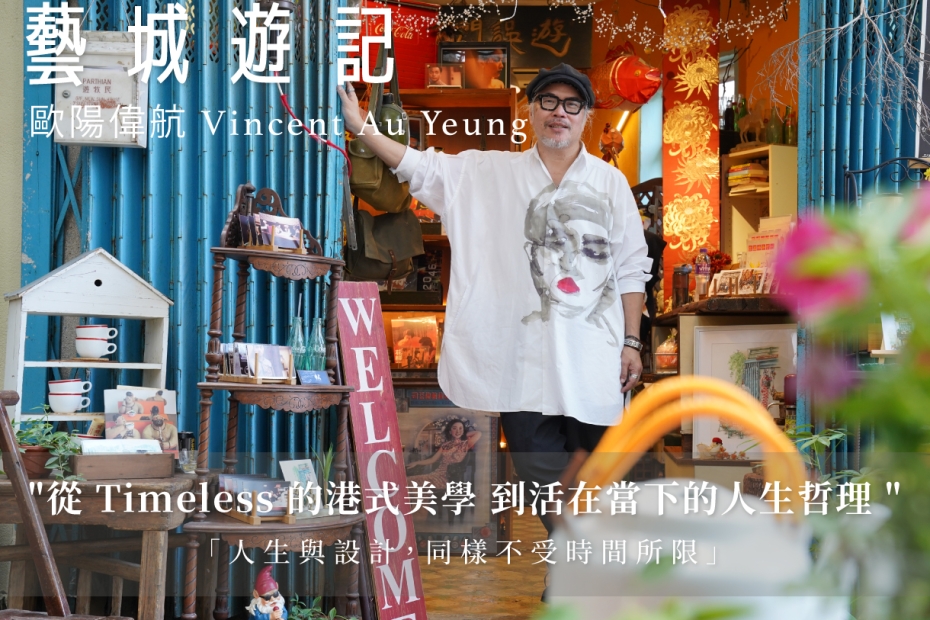Vincent Au Yeung – with multiple identities, is a designer, a collector of “Made in Hong Kong” items, and also the owner of a cultural store. The intertwining of work and interests gives Vincent a unique perspective on the term “design.”
Some people believe that designs are divided by eras, but Vincent says that many designs are timeless, born in a certain era but not limited by it. As long as they can blend into the present moment, designs also belong to the current time. This perfectly reflects Vincent’s philosophy of life – “Life and design are not limited by time”, setting boundaries for imagination is the real limitation.
Becoming connected with “Made in Hong Kong”
Vincent, who studies design, has already begun researching the history related to design during his studies. He discovered that many successful designs come from Hong Kong, such as the Disney commemorative clothing from the 1980s. The beautiful embroidery deeply attracted Vincent, becoming not only a collection but also his daily attire.
Sharing is caring, of course good things should be shared with more people, and Culture Vulture happens to be the perfect platform for sharing. Two years ago, Vincent collaborated with local emerging designers to donate several Disney clothing items for upcycling.
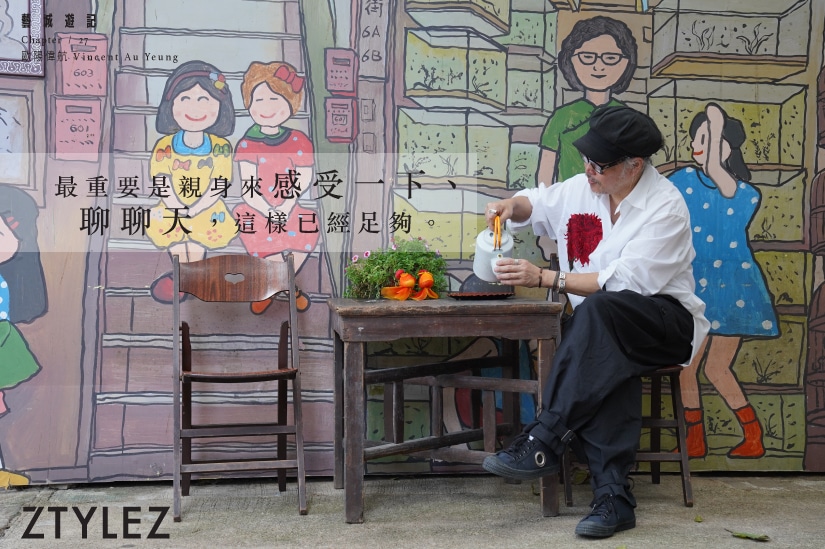
The public deepened their understanding of this community through cultural stores, only to discover that the most exciting part of this street is actually its staircase. Many staircases in Hong Kong Island are very narrow, but this staircase is very wide. During events, everyone can sit on the stairs, such as concerts, lectures, sharing sessions, etc., and naturally sit down to chat and interact. It is definitely a precious place for Hong Kong.
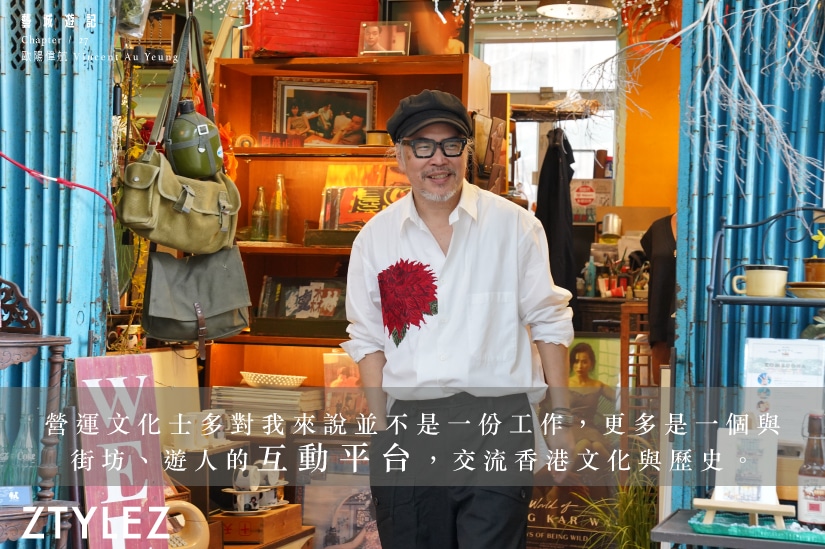
Photography & Interview: Local Dining Table Travel
Videographer: Alvin Kong & Kason Tam
Video Edit: Kason Tam
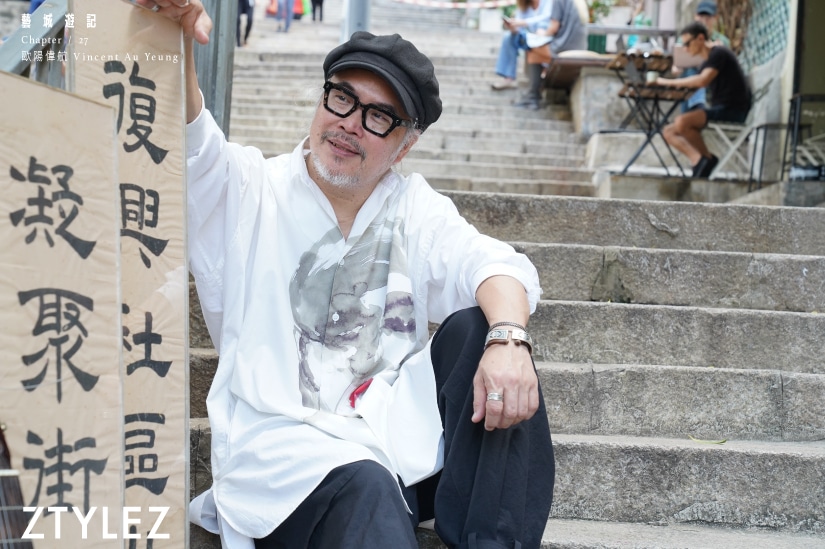

The public deepened their understanding of this community through cultural stores, only to discover that the most exciting part of this street is actually its staircase. Many staircases in Hong Kong Island are very narrow, but this staircase is very wide. During events, everyone can sit on the stairs, such as concerts, lectures, sharing sessions, etc., and naturally sit down to chat and interact. It is definitely a precious place for Hong Kong.

Photography & Interview: Local Dining Table Travel
Videographer: Alvin Kong & Kason Tam
Video Edit: Kason Tam
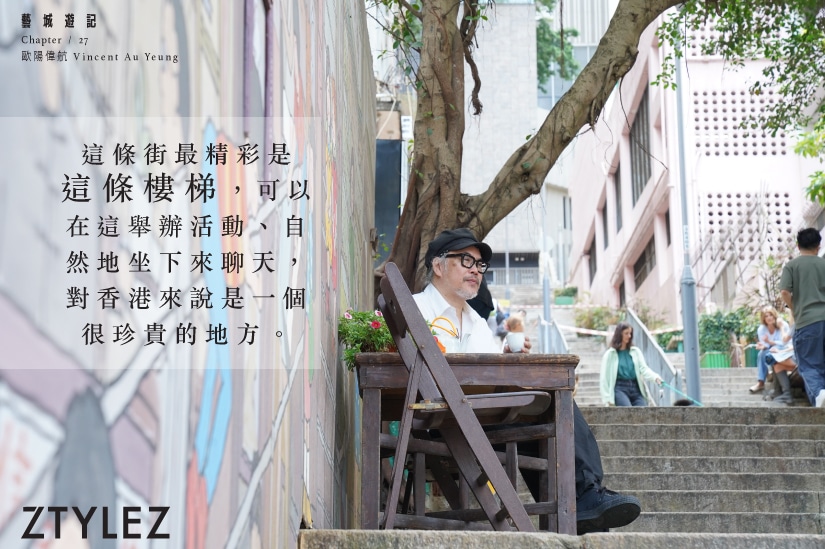
“I came back to work on this project, operating in my own way. It serves as a local store to communicate with everyone, as well as to organize cultural activities and connect with the community. Coincidentally, in recent years, more people have been interested in getting to know the old Hong Kong. This area also has revitalized historical sites like Tai Kwun and PMQ, attracting different types of people. This shop is located right in the middle, with residents walking from top to bottom and tourists walking from bottom to top, giving me many opportunities to interact and spark many conversations with them.”


The public deepened their understanding of this community through cultural stores, only to discover that the most exciting part of this street is actually its staircase. Many staircases in Hong Kong Island are very narrow, but this staircase is very wide. During events, everyone can sit on the stairs, such as concerts, lectures, sharing sessions, etc., and naturally sit down to chat and interact. It is definitely a precious place for Hong Kong.

Photography & Interview: Local Dining Table Travel
Videographer: Alvin Kong & Kason Tam
Video Edit: Kason Tam
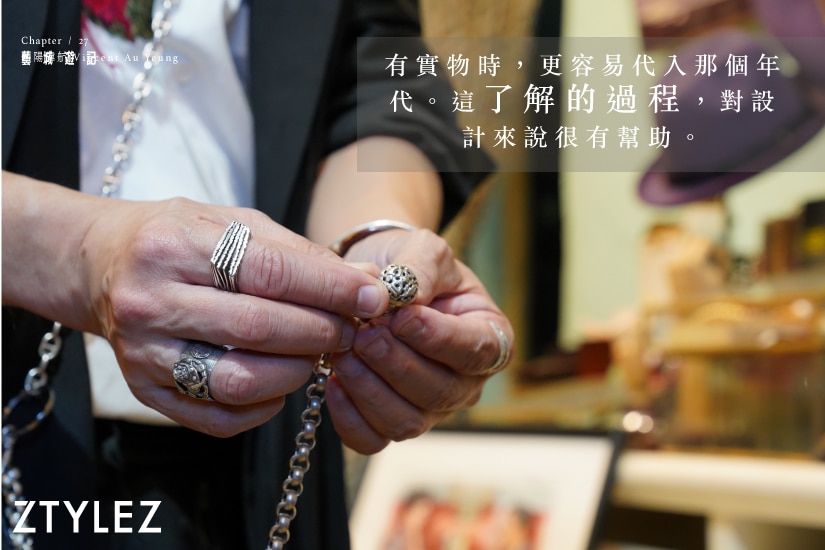
A Bond Beyond Fifty Years with Central and Western District
Growing up in Central, my dad ran a cha chaan teng there. My life during primary and secondary school was all around the Central and Sheung Wan area. After graduation, I had to run around for work until recent years when a friend invited me to operate a cultural store. It’s as if this area has a magnetic pull, bringing Vincent back to the embrace of Central and Western District. The cultural store is located on Sing Wong Street, a section of Pottinger Street to Cochrane Street, up a flight of stone stairs. The building, with over seventy years of history, still retains its original design while keeping up with the times in terms of functionality.

“I came back to work on this project, operating in my own way. It serves as a local store to communicate with everyone, as well as to organize cultural activities and connect with the community. Coincidentally, in recent years, more people have been interested in getting to know the old Hong Kong. This area also has revitalized historical sites like Tai Kwun and PMQ, attracting different types of people. This shop is located right in the middle, with residents walking from top to bottom and tourists walking from bottom to top, giving me many opportunities to interact and spark many conversations with them.”


The public deepened their understanding of this community through cultural stores, only to discover that the most exciting part of this street is actually its staircase. Many staircases in Hong Kong Island are very narrow, but this staircase is very wide. During events, everyone can sit on the stairs, such as concerts, lectures, sharing sessions, etc., and naturally sit down to chat and interact. It is definitely a precious place for Hong Kong.

Photography & Interview: Local Dining Table Travel
Videographer: Alvin Kong & Kason Tam
Video Edit: Kason Tam
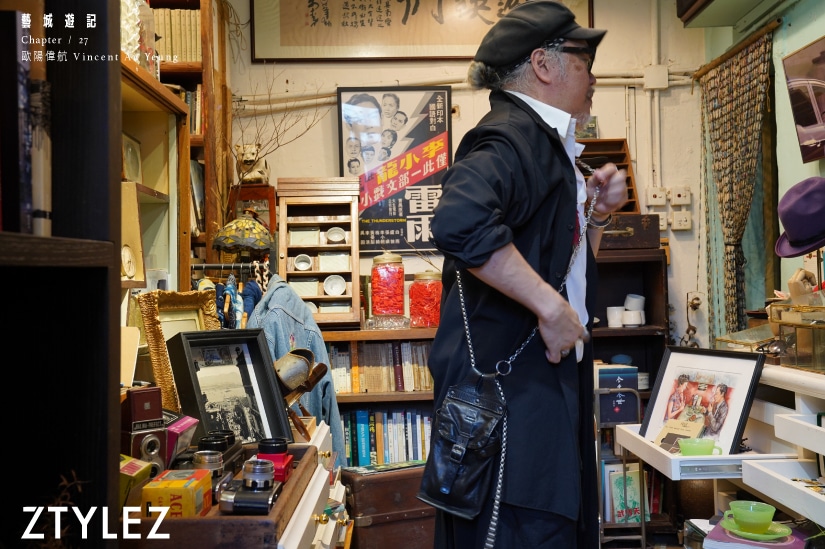

A Bond Beyond Fifty Years with Central and Western District
Growing up in Central, my dad ran a cha chaan teng there. My life during primary and secondary school was all around the Central and Sheung Wan area. After graduation, I had to run around for work until recent years when a friend invited me to operate a cultural store. It’s as if this area has a magnetic pull, bringing Vincent back to the embrace of Central and Western District. The cultural store is located on Sing Wong Street, a section of Pottinger Street to Cochrane Street, up a flight of stone stairs. The building, with over seventy years of history, still retains its original design while keeping up with the times in terms of functionality.

“I came back to work on this project, operating in my own way. It serves as a local store to communicate with everyone, as well as to organize cultural activities and connect with the community. Coincidentally, in recent years, more people have been interested in getting to know the old Hong Kong. This area also has revitalized historical sites like Tai Kwun and PMQ, attracting different types of people. This shop is located right in the middle, with residents walking from top to bottom and tourists walking from bottom to top, giving me many opportunities to interact and spark many conversations with them.”


The public deepened their understanding of this community through cultural stores, only to discover that the most exciting part of this street is actually its staircase. Many staircases in Hong Kong Island are very narrow, but this staircase is very wide. During events, everyone can sit on the stairs, such as concerts, lectures, sharing sessions, etc., and naturally sit down to chat and interact. It is definitely a precious place for Hong Kong.

Photography & Interview: Local Dining Table Travel
Videographer: Alvin Kong & Kason Tam
Video Edit: Kason Tam
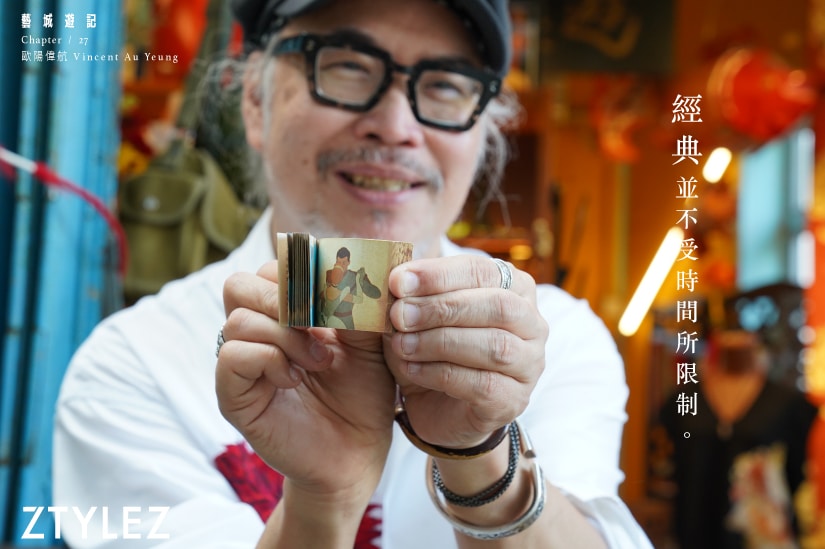
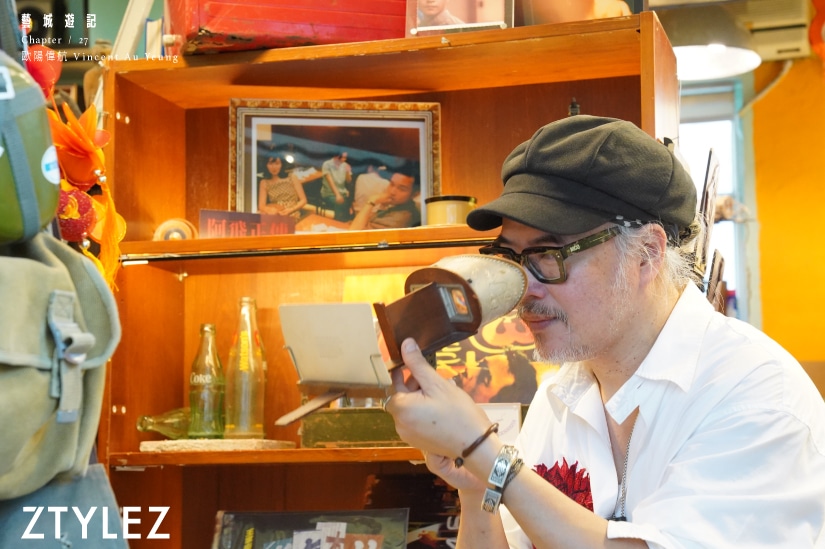
Wearing old and new
Design can travel through different eras, and different eras can also be worn on the body! Vincent, dressed in Yohji Yamamoto’s outfit, appears in historical buildings every Friday, Saturday, and Sunday. The Qing Dynasty apron chain matches Yohji’s small bag, blending the past and present. Before the age of fifty, he liked to wear colorful clothes, but after turning fifty, with a change in mindset, he began to prefer comfortable and natural clothing. He gradually leaned towards wearing black clothes, discovering the different shades of black within. In fact, Yohji Yamamoto’s clothing is mainly in black, and the infinite variations of black can withstand the test of time. Even designs from ten years ago remain timeless, aligning perfectly with Vincent’s philosophy.


A Bond Beyond Fifty Years with Central and Western District
Growing up in Central, my dad ran a cha chaan teng there. My life during primary and secondary school was all around the Central and Sheung Wan area. After graduation, I had to run around for work until recent years when a friend invited me to operate a cultural store. It’s as if this area has a magnetic pull, bringing Vincent back to the embrace of Central and Western District. The cultural store is located on Sing Wong Street, a section of Pottinger Street to Cochrane Street, up a flight of stone stairs. The building, with over seventy years of history, still retains its original design while keeping up with the times in terms of functionality.

“I came back to work on this project, operating in my own way. It serves as a local store to communicate with everyone, as well as to organize cultural activities and connect with the community. Coincidentally, in recent years, more people have been interested in getting to know the old Hong Kong. This area also has revitalized historical sites like Tai Kwun and PMQ, attracting different types of people. This shop is located right in the middle, with residents walking from top to bottom and tourists walking from bottom to top, giving me many opportunities to interact and spark many conversations with them.”


The public deepened their understanding of this community through cultural stores, only to discover that the most exciting part of this street is actually its staircase. Many staircases in Hong Kong Island are very narrow, but this staircase is very wide. During events, everyone can sit on the stairs, such as concerts, lectures, sharing sessions, etc., and naturally sit down to chat and interact. It is definitely a precious place for Hong Kong.

Photography & Interview: Local Dining Table Travel
Videographer: Alvin Kong & Kason Tam
Video Edit: Kason Tam
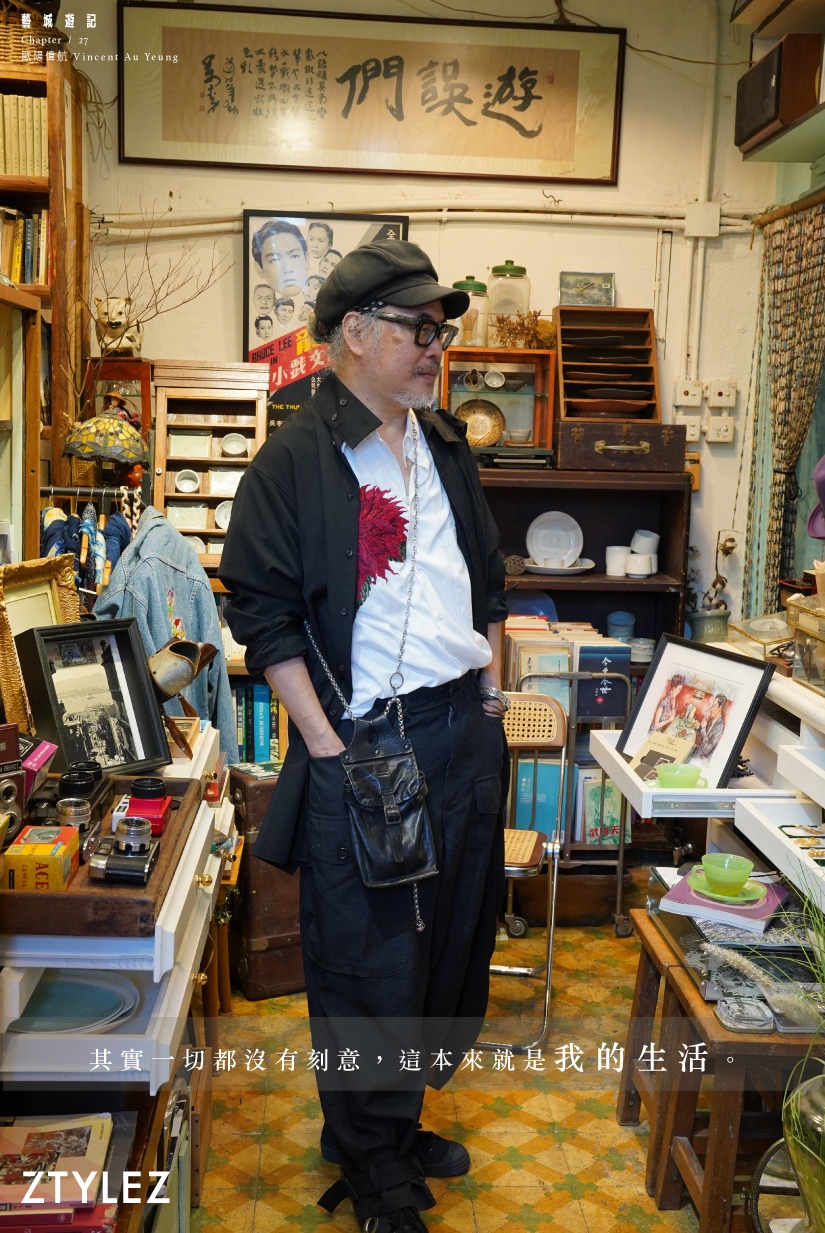
Vincent shares the belief that design is not limited by age, and that past designs can be timeless today. For example, old furniture, as long as it complements the overall design, can belong to the present. This old furniture can be a collectible and also something timeless. “After researching a lot of history, certain design series pay tribute to a certain era as a theme, using the elements in different designs. These elements themselves are timeless and not limited by time.”


Wearing old and new
Design can travel through different eras, and different eras can also be worn on the body! Vincent, dressed in Yohji Yamamoto’s outfit, appears in historical buildings every Friday, Saturday, and Sunday. The Qing Dynasty apron chain matches Yohji’s small bag, blending the past and present. Before the age of fifty, he liked to wear colorful clothes, but after turning fifty, with a change in mindset, he began to prefer comfortable and natural clothing. He gradually leaned towards wearing black clothes, discovering the different shades of black within. In fact, Yohji Yamamoto’s clothing is mainly in black, and the infinite variations of black can withstand the test of time. Even designs from ten years ago remain timeless, aligning perfectly with Vincent’s philosophy.


A Bond Beyond Fifty Years with Central and Western District
Growing up in Central, my dad ran a cha chaan teng there. My life during primary and secondary school was all around the Central and Sheung Wan area. After graduation, I had to run around for work until recent years when a friend invited me to operate a cultural store. It’s as if this area has a magnetic pull, bringing Vincent back to the embrace of Central and Western District. The cultural store is located on Sing Wong Street, a section of Pottinger Street to Cochrane Street, up a flight of stone stairs. The building, with over seventy years of history, still retains its original design while keeping up with the times in terms of functionality.

“I came back to work on this project, operating in my own way. It serves as a local store to communicate with everyone, as well as to organize cultural activities and connect with the community. Coincidentally, in recent years, more people have been interested in getting to know the old Hong Kong. This area also has revitalized historical sites like Tai Kwun and PMQ, attracting different types of people. This shop is located right in the middle, with residents walking from top to bottom and tourists walking from bottom to top, giving me many opportunities to interact and spark many conversations with them.”


The public deepened their understanding of this community through cultural stores, only to discover that the most exciting part of this street is actually its staircase. Many staircases in Hong Kong Island are very narrow, but this staircase is very wide. During events, everyone can sit on the stairs, such as concerts, lectures, sharing sessions, etc., and naturally sit down to chat and interact. It is definitely a precious place for Hong Kong.

Photography & Interview: Local Dining Table Travel
Videographer: Alvin Kong & Kason Tam
Video Edit: Kason Tam
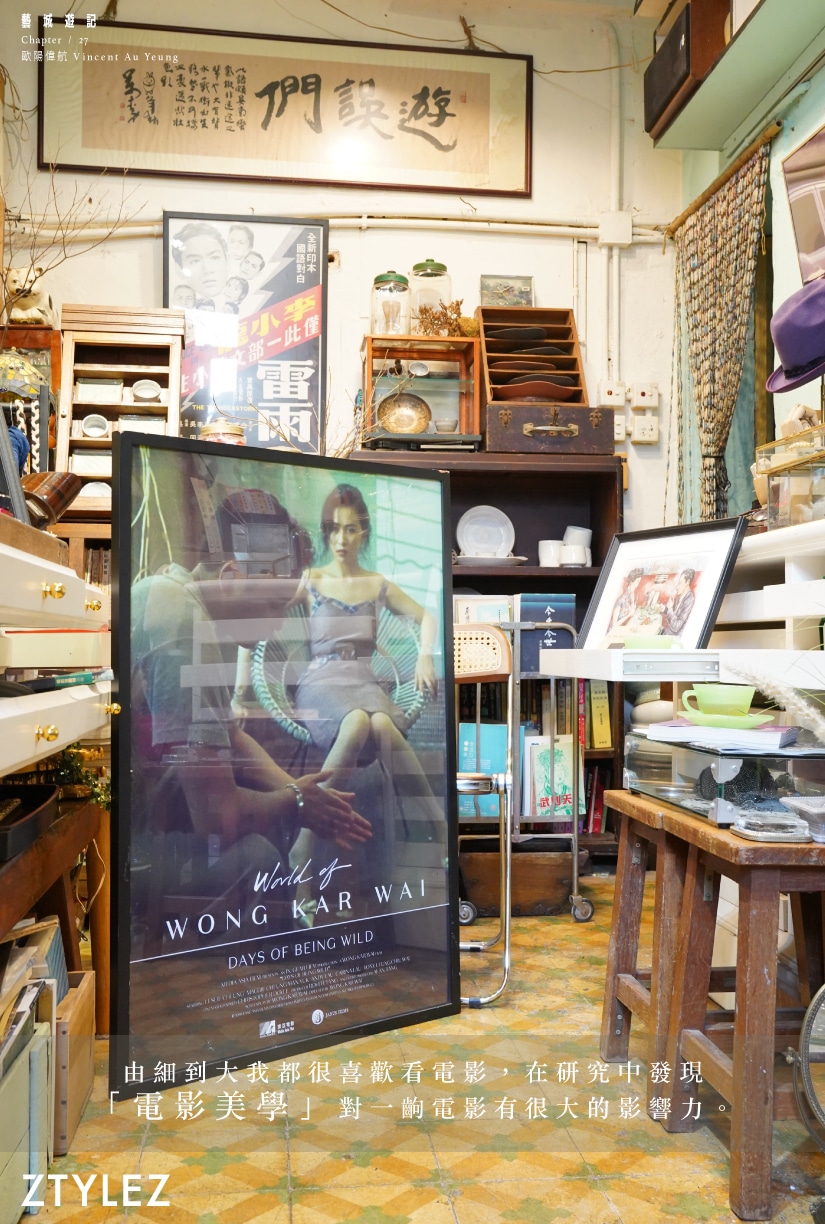
Uncle Cheung Ping can be said to be the pioneer of Hong Kong film art. He has unique insights into aesthetics, and can even influence the director’s shooting techniques. One example is the film “Happy Together.” After the team arrived in Argentina, art director Uncle Cheung Ping searched for props in the local market and found that waterfall lamp, inspiring director Wong Kar-wai to rewrite the story based on that lamp. This shows how deep the influence of film aesthetics can be on movies.
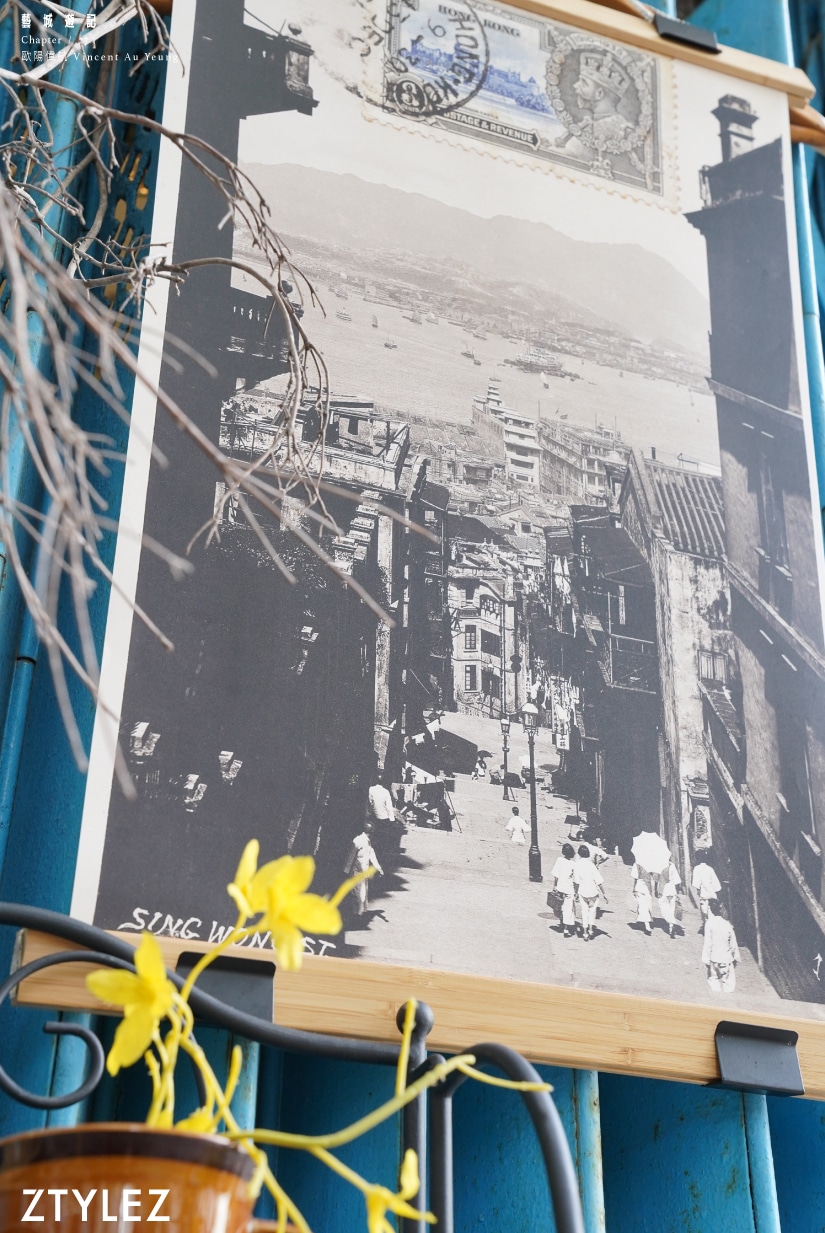
Timeless lifestyle philosophy
The cultural store is located in a building completed in the 1950s, with stairs, floors… born and preserved in that era. The store’s owner can’t help but imagine as “Uncle”, bringing surprises to the neighborhood with Vincent, who often dresses stylishly and enters the atmosphere of the 1950s.

Vincent shares the belief that design is not limited by age, and that past designs can be timeless today. For example, old furniture, as long as it complements the overall design, can belong to the present. This old furniture can be a collectible and also something timeless. “After researching a lot of history, certain design series pay tribute to a certain era as a theme, using the elements in different designs. These elements themselves are timeless and not limited by time.”


Wearing old and new
Design can travel through different eras, and different eras can also be worn on the body! Vincent, dressed in Yohji Yamamoto’s outfit, appears in historical buildings every Friday, Saturday, and Sunday. The Qing Dynasty apron chain matches Yohji’s small bag, blending the past and present. Before the age of fifty, he liked to wear colorful clothes, but after turning fifty, with a change in mindset, he began to prefer comfortable and natural clothing. He gradually leaned towards wearing black clothes, discovering the different shades of black within. In fact, Yohji Yamamoto’s clothing is mainly in black, and the infinite variations of black can withstand the test of time. Even designs from ten years ago remain timeless, aligning perfectly with Vincent’s philosophy.


A Bond Beyond Fifty Years with Central and Western District
Growing up in Central, my dad ran a cha chaan teng there. My life during primary and secondary school was all around the Central and Sheung Wan area. After graduation, I had to run around for work until recent years when a friend invited me to operate a cultural store. It’s as if this area has a magnetic pull, bringing Vincent back to the embrace of Central and Western District. The cultural store is located on Sing Wong Street, a section of Pottinger Street to Cochrane Street, up a flight of stone stairs. The building, with over seventy years of history, still retains its original design while keeping up with the times in terms of functionality.

“I came back to work on this project, operating in my own way. It serves as a local store to communicate with everyone, as well as to organize cultural activities and connect with the community. Coincidentally, in recent years, more people have been interested in getting to know the old Hong Kong. This area also has revitalized historical sites like Tai Kwun and PMQ, attracting different types of people. This shop is located right in the middle, with residents walking from top to bottom and tourists walking from bottom to top, giving me many opportunities to interact and spark many conversations with them.”


The public deepened their understanding of this community through cultural stores, only to discover that the most exciting part of this street is actually its staircase. Many staircases in Hong Kong Island are very narrow, but this staircase is very wide. During events, everyone can sit on the stairs, such as concerts, lectures, sharing sessions, etc., and naturally sit down to chat and interact. It is definitely a precious place for Hong Kong.

Photography & Interview: Local Dining Table Travel
Videographer: Alvin Kong & Kason Tam
Video Edit: Kason Tam
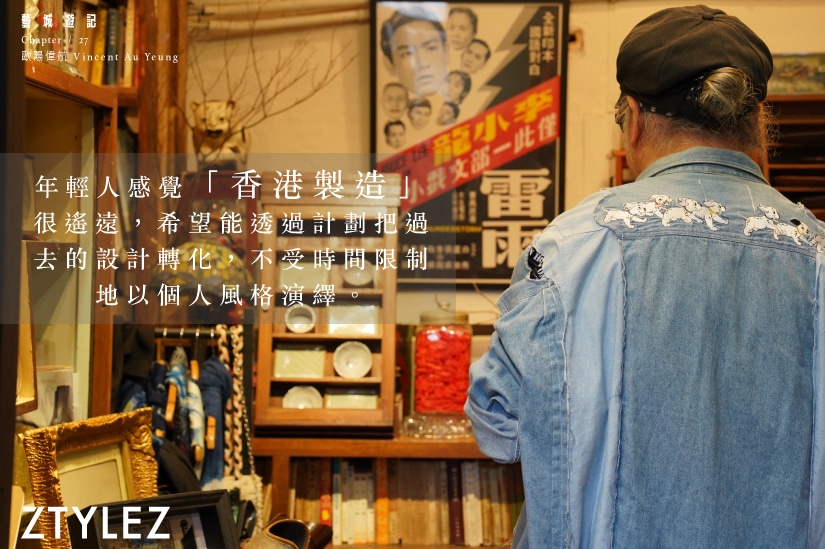
Zhang Shuping and Hong Kong Style Aesthetics
Hong Kong aesthetics is also a product of “Made in Hong Kong”! From small to large, Vincent, who loves movies, never misses a Cantonese feature film or classic film from the 1980s. His favorite is the Hong Kong of the 1950s and 1960s captured on film. “Dianmao Film Company” – a film company active in the 1950s and 1960s, is one of his research subjects. The films produced by them have a profound influence on famous filmmakers such as Wong Kar-wai and Chang Cheh, and the Hong Kong scenes of that era often appear in their works.

Uncle Cheung Ping can be said to be the pioneer of Hong Kong film art. He has unique insights into aesthetics, and can even influence the director’s shooting techniques. One example is the film “Happy Together.” After the team arrived in Argentina, art director Uncle Cheung Ping searched for props in the local market and found that waterfall lamp, inspiring director Wong Kar-wai to rewrite the story based on that lamp. This shows how deep the influence of film aesthetics can be on movies.

Timeless lifestyle philosophy
The cultural store is located in a building completed in the 1950s, with stairs, floors… born and preserved in that era. The store’s owner can’t help but imagine as “Uncle”, bringing surprises to the neighborhood with Vincent, who often dresses stylishly and enters the atmosphere of the 1950s.

Vincent shares the belief that design is not limited by age, and that past designs can be timeless today. For example, old furniture, as long as it complements the overall design, can belong to the present. This old furniture can be a collectible and also something timeless. “After researching a lot of history, certain design series pay tribute to a certain era as a theme, using the elements in different designs. These elements themselves are timeless and not limited by time.”


Wearing old and new
Design can travel through different eras, and different eras can also be worn on the body! Vincent, dressed in Yohji Yamamoto’s outfit, appears in historical buildings every Friday, Saturday, and Sunday. The Qing Dynasty apron chain matches Yohji’s small bag, blending the past and present. Before the age of fifty, he liked to wear colorful clothes, but after turning fifty, with a change in mindset, he began to prefer comfortable and natural clothing. He gradually leaned towards wearing black clothes, discovering the different shades of black within. In fact, Yohji Yamamoto’s clothing is mainly in black, and the infinite variations of black can withstand the test of time. Even designs from ten years ago remain timeless, aligning perfectly with Vincent’s philosophy.


A Bond Beyond Fifty Years with Central and Western District
Growing up in Central, my dad ran a cha chaan teng there. My life during primary and secondary school was all around the Central and Sheung Wan area. After graduation, I had to run around for work until recent years when a friend invited me to operate a cultural store. It’s as if this area has a magnetic pull, bringing Vincent back to the embrace of Central and Western District. The cultural store is located on Sing Wong Street, a section of Pottinger Street to Cochrane Street, up a flight of stone stairs. The building, with over seventy years of history, still retains its original design while keeping up with the times in terms of functionality.

“I came back to work on this project, operating in my own way. It serves as a local store to communicate with everyone, as well as to organize cultural activities and connect with the community. Coincidentally, in recent years, more people have been interested in getting to know the old Hong Kong. This area also has revitalized historical sites like Tai Kwun and PMQ, attracting different types of people. This shop is located right in the middle, with residents walking from top to bottom and tourists walking from bottom to top, giving me many opportunities to interact and spark many conversations with them.”


The public deepened their understanding of this community through cultural stores, only to discover that the most exciting part of this street is actually its staircase. Many staircases in Hong Kong Island are very narrow, but this staircase is very wide. During events, everyone can sit on the stairs, such as concerts, lectures, sharing sessions, etc., and naturally sit down to chat and interact. It is definitely a precious place for Hong Kong.

Photography & Interview: Local Dining Table Travel
Videographer: Alvin Kong & Kason Tam
Video Edit: Kason Tam

